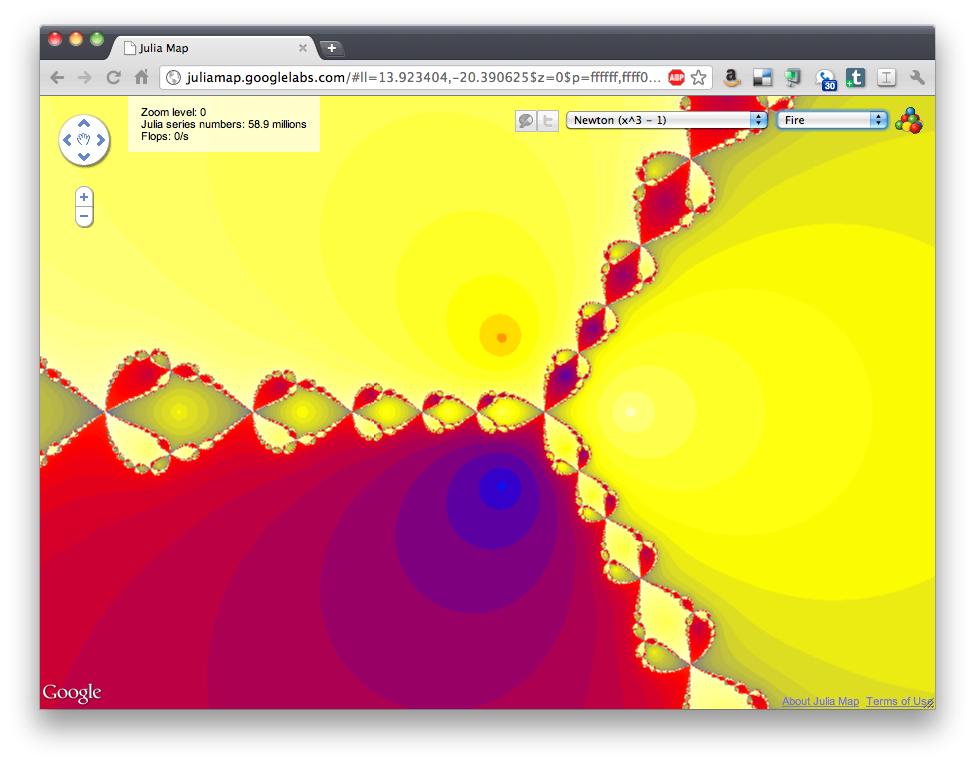Recently Google Labs released its Julia Map fractal renderer – a neat project that uses the power of HTML5, the simple Google Maps interface, and remote processing to zoom endlessly into fractals. Try it!
Google:
Julia sets are fractals that were studied by the French mathematician Gaston Julia in the early 1920s. Fifty years later, Benoît Mandelbrot studied the set z2 ? c and popularized it by generating the first computer visualisation. Generating these images requires heavy computation resources. Modern browsers have optimized JavaScript execution up to the point where it is now possible to render in a browser fractals like Julia sets almost instantly.
Julia Map uses Google Maps API, and HTML 5 Canvas to render the images. It will let you browse these fractals in an interactive manner. We hope you will enjoy exploring the different Julia sets, and share the URLs of the most artistic images you discovered.
Update 2011-03-11**
Ben Beyda just sent over this new fractal rendering engine, Fractal Lab. From Ben: “We could see this project being pushed even further by adding the ability to create animations from these infinite worlds, which could then be exported and integrated into live visuals and other video-based work.”
Fractal Lab is a WebGL based fractal explorer allowing you to explore 2D and 2D fractal. The fractals are rendered using the OpenGL Shading Language (GLSL) to enable real-time interactivity.

